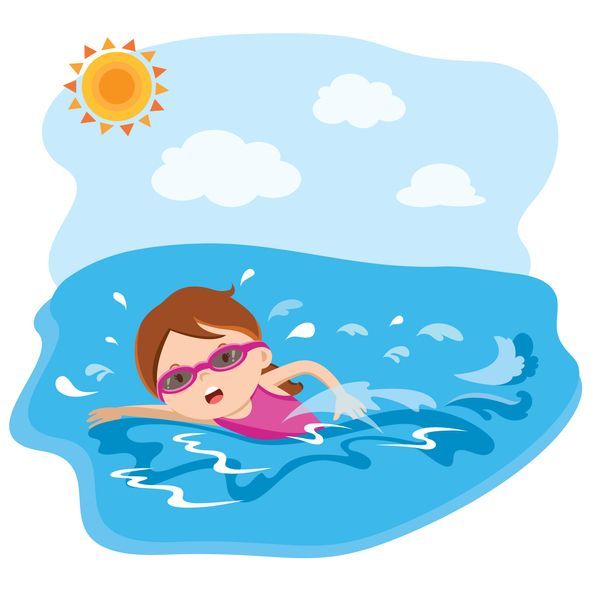Drowning Prevention: How Swimming Lessons Can Save Your Child’s Life

May is National Drowning Prevention Month, and we’re doing our part to spread awareness by teaching parents how swimming lessons can be the ultimate drowning prevention tool.
Drowning Statistics
Unfortunately, downing is the leading cause of unintentional death for children ages 1-4. An average of 10 drowning deaths happen every day in the United States, according to the Center for Disease Control. With startling statistics like this, it’s more important than ever to be aware of drowning risks and how to avoid them.

Photo Credit: graphic-bee
Swimming Lessons and Drowning Prevention
Enrolling your children in swimming lessons can greatly reduce the risk of drowning. In fact, swim lessons for children can reduce the risk of drowning by 88 percent, according to the World Waterpark Association .
Experts from the American Academy of Pediatrics (AAP) suggest swimming lessons should start as early as one year old, to reduce the risk of drowning and keep kids safe. Swimming lessons should continue until older childhood, when the child is proficient in swim strokes and can handle a variety of water situations safely on their own.
How Swimming Lessons Have Saved Lives
Here are just a few stories of children who used the skills they learned in swimming lessons to save their lives.
Four-Year-Old Remembers Swim Training
In 2016, a 4-year-old boy named Patrick Huminski made the news after saving his own life in a pool in Tempe, Arizona. He was playing near a pool and accidentally fell in as he reached in to grab the pool thermometer.
His father was nearby, but Patrick was able to get himself out of the pool on his own by using his pool training. He quickly rolled over and remembered his “airplane” moves from swimming lessons: using elbow, elbow, knee, knee motions to get out of the pool.
Two-Year-Old Floats On His Back Until Help Arrives
Parents Carolyn and Dan Haber of Central Florida have a similar story to tell . They were going in and out of the house, using the grill and getting ready for guests to come to dinner. As they went to greet their friends at the front door, they walked back into the house to see their two-year-old son had fallen into the pool.
They rushed to save him, but realized their son was calmly floating on his back. He told his parents, “I did what I was supposed to do,” recalling training from his recent swimming lessons. His parents were shaken, but two-year-old Richard Daniel remained composed thanks to the skills he had learned.
Swimming Safety Tips
The AAP stresses that swimming is just one layer of protection for a child. Here are other safety tips to keep your kids safe at the pool this summer:
- Even once a child learns to swim, they should continue to wear a life vest when in the water.
- Stay within arm’s reach of small children, until they are confident swimmers.
- Always know how deep the water is, and avoid jumping if the water is less than 9 feet deep.
- Avoid diving in water less than 12 feet deep.
- Set clear rules for kids when you get to the pool.
- No running near a pool.
- Learn CPR before heading to the pool for the season.
- Do not rely on pool toys as a substitute for a life jacket.
- Always know where children are at all times.
- If possible, keep the pool covered when not in use.
- Avoid entrapment. Kids can drown by getting sucked down into a pool drain, so make sure any pool you’re swimming in is updated to have two drains for the pump, reducing suction and likelihood of entrapment.
Enroll in Swim Lessons Today
As the weather warms up and families head to the pool, make sure your kids get the best chance of a safe and fun experience by enrolling them in swimming lessons. SwimJim has experienced swim instructors to help people of all ages have a happy, healthy, safe swim experience. Check out local swim classes in New York City and Houston at SwimJim today. After all, there’s no better way to celebrate Drowning Prevention Month than learning how to save a child from drowning, or empowering them to save themselves.
The post Drowning Prevention: How Swimming Lessons Can Save Your Child’s Life appeared first on Swim Jim.







